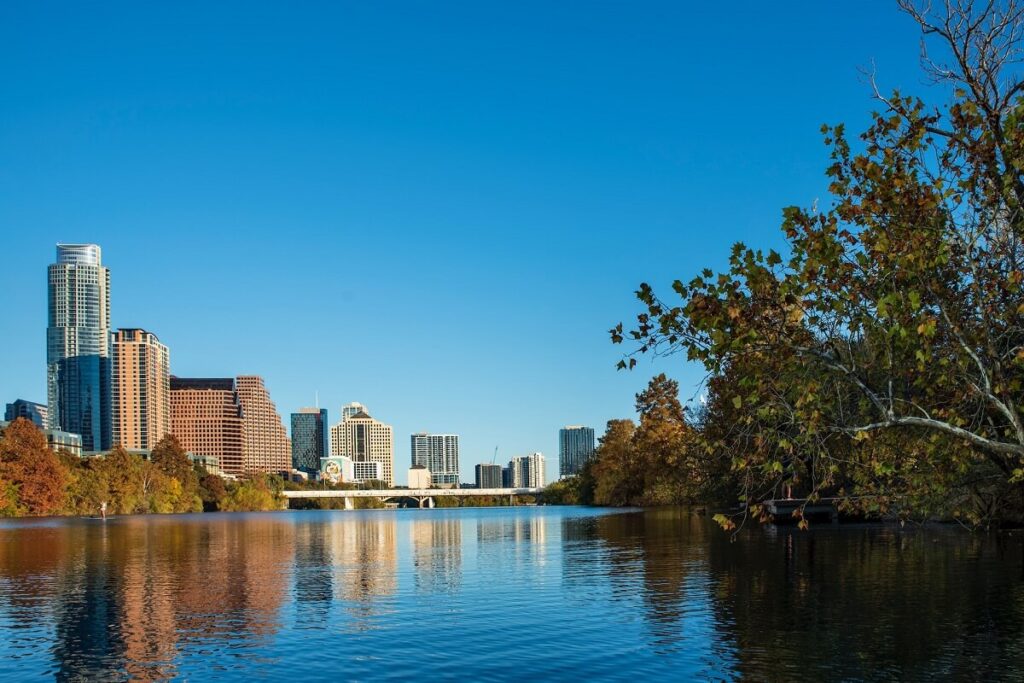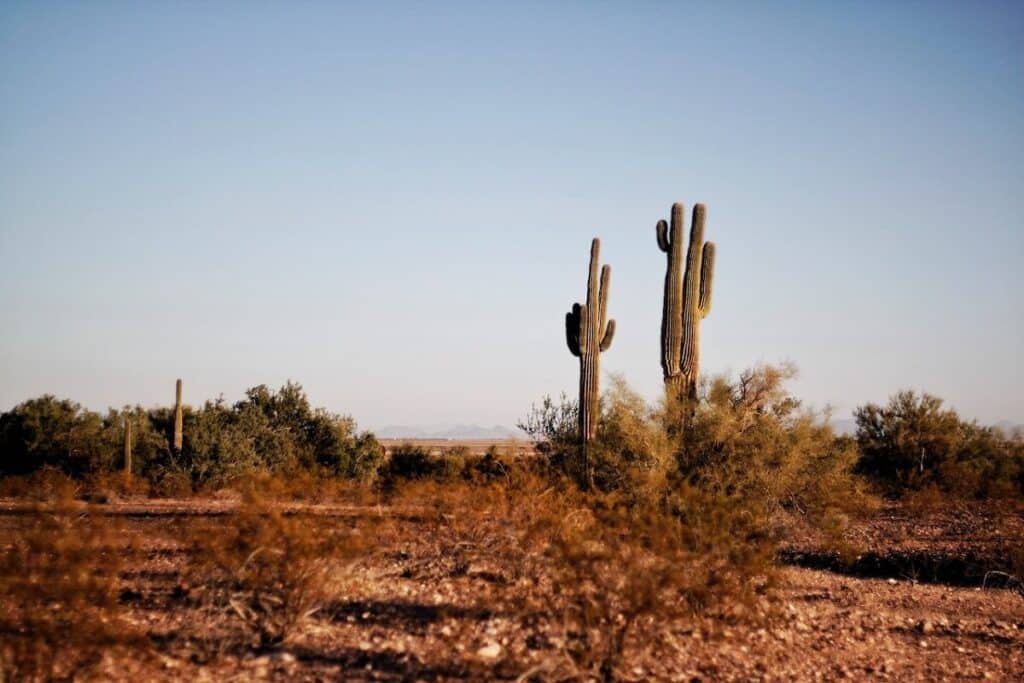Among the questions you probably asked yourself while deciding where to retire is, “Is Texas or Arizona hotter?” It isn’t surprising, as most of you would want to escape the freezing, snowy winter weather.
So, is Texas or Arizona hotter? Although these two states are always included in the top 10 hottest in the country, Texas has always been in the first half of the list, while Arizona is always in the last half. It goes without saying that Texas is way hotter than Arizona.
Understandably, each of you has a personal preference, so not just because Arizona is generally cooler than Texas, you all prefer it over Texas, or one can recommend that it’s better to spend your retirement years in Texas than in Arizona. As such, let’s get to know each of the two states in terms of climate or weather to help you decide better where to move or retire.

Is Texas or Arizona Hotter: A Breakdown
It’s not surprising that the hottest states in the US are located in the southern part of the country since they experience more sunshine and warmer temperatures for more extended periods. The temperature in these states can get uncomfortably high in summer, leading to heat waves and health concerns.
Texas’ Climate and Weather Details
The State of Texas is known for its warm weather, long sunny days, and clear skies throughout the day.
Showers or rain don’t even last long, only around one to two days, so the average annual rainfall is only around 27.25 inches. The state also only gets approximately 61 days of rain every year.
During winter in the state, the weather is fairly mild, and snow is very rare. However, sometimes, the state will experience sleet and freezing rain. In some parts of the state, they also experience short-lived hail.
What Are the Average Temperatures in Texas?
Throughout the year, the average temperature in Texas is 68°F (20°C), but during summer time, it’s around 84°F (about 29°C). Regarding average maximum temperature, usually in August, it’s 97°F (or around 37°C).
As of writing, the highest average temperature recorded for Texas is 120 °F (or around 49°C). You must note, though, that this extreme temperature isn’t very common. It usually only occurs during heatwaves and in some areas, not the whole state.
Now, if you want to stay away from the hottest cities in Texas, here’s a short list that you can use as a reference:
- Austin
- Brownsville
- Del Rio
- San Angelo
- San Antonio
If you prefer milder heat, here are five of the coolest cities in Texas:
- Amarillo
- Stratford
- Levelland
- Pampa
- Plainview
Is Texas Humid?
Texas is among the largest states in the country, so its climate ranges from arid to subtropical humidity. Its humidity is owed to the fact that it’s located in the earth’s tropical zone.
Its most humid areas are those sitting close to the Gulf of Mexico’s border. Why, you may ask? Well, the Gulf of Mexico contributes to the amount of air moisture in the nearby areas.
It’s also why these areas usually experience the weather event known as the “Alamo.” This weather event is the meeting of two weather fronts with different moisture, temperature, and humidity densities. During this event, “warm moisture” is trapped, so the state experiences high ground humidity, not just high air humidity.
Relative Texas humidity ranges from 58% to 67%, but it can go as high as 70% to 80%.
Now, if you don’t like high humidity, the following cities in Texas are five of the most humid:
- South Padre Island
- Laguna Heights
- Laguna Vista
- Port Isabel
- Jones Creek
Meanwhile, here are four cities in Texas with low humidity:
- Amarillo
- El Paso
- Lubbock
- Midland-Odessa
- Rosenberg
When Does Summer Start in Texas?
The long, hot summer season in Texas usually starts as soon as you flip your calendar to the month of June. Temperatures are, of course, higher, and the conditions are drier. Typically, the summer season lasts before the end of August.
When Does It Start Cooling Down in Texas?
While the summer season in Texas usually ends in the last week of August, a significant and gradual decrease in the temperature starts in the last week of November. Texans and tourists will experience cool nights and days.
However, remember that Texas is one of the largest states in the US. It means that the climate is quite diverse, so the cooling period will also vary. For instance, the southern and coastal parts of the state usually experience cooling down earlier than the northern and more inland regions of Texas.
Arizona’s Climate and Weather Details

Like Texas, Arizona is known for its warm temperature and clear skies throughout the day. Rain is also low, only around three to 40 inches, depending on the specific region.
However, it can take around five days of continuous rain. Still, the state only gets around 36 days of rain every year. Hail is also becoming more common than it used to be.
The winter season in Arizona is also fairly mild, like in Texas, as it usually doesn’t experience freezing temperatures. Snow is also very rare.
What Are the Average Hot Temperatures in Arizona?
In terms of the annual average temperature in the Copper State is around 63°F (approximately 18 °C), while the average summer temperature is about 80°F (around 27°C). Of course, the temperature is higher during the summer season, with a maximum average of about 94°F (around 34°C).
Like Texas, Arizona experienced extreme heat, usually observed in the desert regions of Colorado River Valley and Death Valley. That said, as of writing, the highest temperature recorded is 128°F (around 54°C).
Now, if you’re curious about the hottest cities in Arizona, here they are:
- Yuma
- Phoenix
- Glendale
- Bullhead City
- Lake Havasu City
Meanwhile, here are the top cities to consider if you want to escape Arizona’s high temperature but still want to enjoy its warm weather:
- Grand Canyon
- Payson
- Prescott
- Show Low
- Williams
Is Arizona Humid?
Despite the presence of moisture and heat, humidity across the state is still lower than in Texas; in fact, even in most states in the US.
Number-wise, the average annual humidity is around 35% to 40% in the lower regions and around 50% to 60% in the higher or mountainous regions. The lowest humidity is usually in June, which can range from 11% to 19% in the lower regions and 30% to 35% in the mountains.
Specifically, almost half of the Copper State is semi-arid, about a third is arid, and the rest is humid.
That said, here are five humid cities in the State of Arizona you may want to consider moving to:
- Tusayan
- Grand Canyon Village
- Truxton
- Hualapai
- Supai
If you don’t mind the dry climate, here are some cities to consider:
- Avondale
- Gilbert
- Phoenix
- Prescott
When Does Summer Start in Arizona?
Arizona’s summer season typically starts in the third week of June, lasting up to the third of September. The intense heat can be as high as 100F (38C) in most regions in the state.
When Does It Start Cooling Down in Arizona?
October is one of the favorite times of the year tourists visit Arizona because it’s when the temperature starts to decrease gradually. Like with Texas, the temperature is different in different regions, and some will start to get cooler earlier than other areas. That’s because Arizona has diverse elevations and landscapes.
Specifically, the lower regions, such as Tucson and Phoenix, have higher temperatures and will cool down a little later than those with higher elevations, such as Grand Canyon and Flagstaff.
Texas vs. Arizona Climate and Weather: A Quick Comparison

Now that we’re familiar with the specific climate and weather in the two states, let’s look at the differences to understand better why the answer to “Is Texas or Arizona hotter?” is Texas.
The major difference between the two states in question is that Arizona’s heat is drier than Texas, the temperature is almost always lower, and its weather is less variable. Arizona also has lesser rainfall all year round, making it a perfect choice if you prefer drier weather or climate.
Environmental Issues Due to Heat Experienced by Arizona and Texas
While there is a difference in humidity and temperature levels, Arizona and Texas experience almost the same environmental issues due to their hot climate. Add that to the fact that the earth is experiencing climate change.
Hence, here are the common environmental issues that you should keep in mind once you finally decide to move to any of the two states:
Heatwaves
This environmental hazard refers to a situation wherein an area experience extremely hot weather for a number of days.
These prolonged days of high temperature can negatively impact one’s health, especially the most vulnerable population, the seniors. These conditions can include dehydration, heat exhaustion, and even heatstroke.
Drought
Droughts usually happen when there is less rainfall than expected. This event not only causes water shortage but also affects the ecosystems. It can lead to reduced vegetation cover, wildlife habitat loss, and even death of plants and animals.
Wildfires
When the states’ low humidity and high temperature are combined with dry vegetation, there will be an increased risk of wildfires. Both states have a vast area of shrublands, grasslands, and forests, making them highly susceptible to ignition during prolonged drought and heat waves.
Other Weather Events
Both states’ drier and hotter climates can lead to other weather events like hailstorms, thunderstorms, dust storms, tropical storms, and hurricanes.
Is Texas or Arizona Hotter: In Conclusion
Whether you choose Arizona or Texas as your retirement home, make sure you’re prepared for the heat. Invest in a quality cooling system, have moisture-wicking clothes, and a pair of sunglasses with excellent UV protection (view on Amazon). If you’re moving to a humid area, consider having a high-quality, easy-to-use cool-mist humidifier (view on Amazon) since it can protect your home and yourself from the negative effects of high humidity.
While Texas is hotter than Arizona temperature and even more humid, both their summer seasons are a bit intense and long. Still, there will be months when you’ll enjoy cool days and nights without freezing or getting snowed in. So, if you’re from a state with extreme winter seasons or snow, you might only need a shawl (view on Amazon) to keep you warm.
That said, you must also keep in mind that the two states are prone to some environmental issues, especially now, due to extreme heat. Make sure you review your state’s guidelines for your safety in case any of these occurs. Plus, don’t forget to stay updated with the weather.
References:
- wisevoter.com
- currentresults.com
- gov.texas.gov
- earth.org
- texasview.org/is-texas-dry-or-humid/
- quora.com/How-humid-is-Texas
- currentresults.com
- washingtonpost.com
- texasview.org/when-is-summer-in-texas/
- azclimate.asu.edu/climate/
- iexplore.com
- statesummaries.ncics.org
- britannica.com
- interactivehailmaps.com
- upnest.com
- quora.com/How-is-the-humidity-in-Arizona-in-the-summer
- worlddata.info
- quora.com/How-long-does-summer-last-in-Arizona
- earth.org/texas-climate-change/
- ein.az.gov/hazards/extreme-heat
- new.azwater.gov (Drought)
- ein.az.gov/hazards/wildfire
- 12news.com
- savoteur.com
- usa.com
- betterwhere.com
- moneyinc.com
